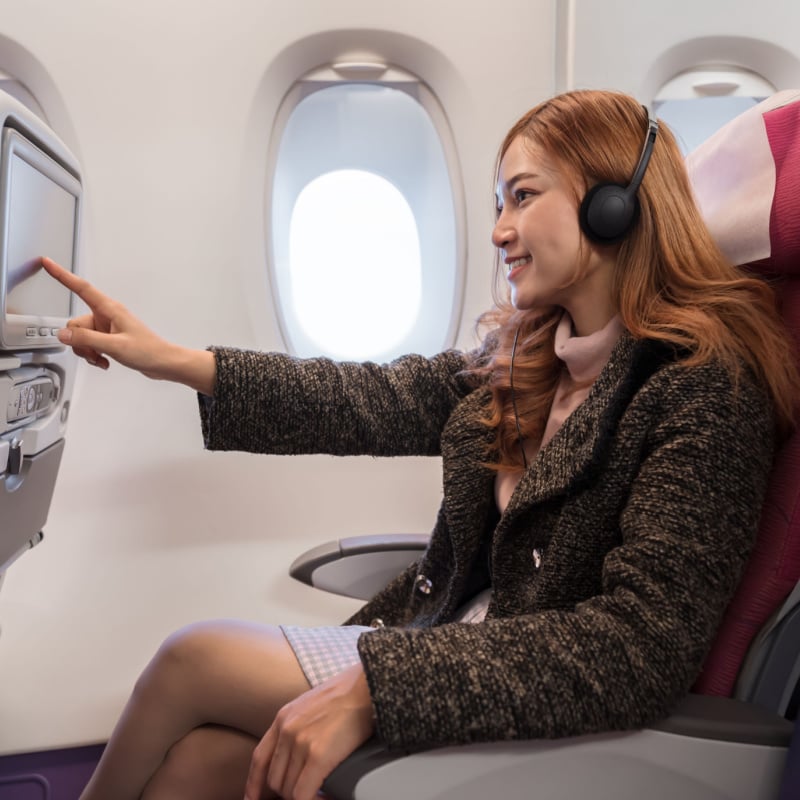It seems like airplane seats couldn’t get any smaller, but the Federal Aviation Authority (FAA) is currently seeking public comments to determine if airlines should be restricted in decreasing seat sizes. There are currently no rules in place regarding the space and size of airplane seats, so without an official ruling, airlines can continue to decide their own measurements.
A long-time advocate of introducing regulations for minimum seat room and distance between seat rows is United States Senate Majority Leader Chuck Schumer, who had been pushing for amendments to the FAA reauthorization bill since 2016. Over the weekend, Schumer was again urging the public to fight against the FAA and to submit comments by November 1 to ensure that airlines aren’t given the freedom to shrink seat sizes even further.
“Any minimum seat and [legroom] size standard should be made with the input of experts and consumers and based on science, passenger health, and safety, not only the maximum number of people that can be crammed into one plane to make a buck,” said Schumer in a statement.

Currently, federal laws require a certain amount of space in exit rows, but ownership has fallen on airlines to decide their own seating configurations. According to a report published by Fortune, the average seat pitch (the measurement from the back of one seat to the same point of the seat in front) went from 35 inches in the 1970s to approximately 31 inches today, and the average airline seat width has dropped to around 17 inches, originally 18.5 inches.
Why is this the FAA seeking public input?
The FAA was required to examine the seat issue after Congress approved a bill to amend the FAA Reauthorization Bill back in 2018, so the FAA conducted simulated emergency evacuations to determine if seat sizes impacted passenger safety. Critics have said the simulated emergency evacuations didn’t go far enough since the study excluded children, people over 60, and individuals with disabilities. The FAA is now opening a window for the public to share their own comments so the FAA can take them into consideration for its examination, ultimately determining if restrictions will be necessary to enact on airlines.

“The FAA invites public comments to assist the agency in determining what minimum dimensions (including pitch, width, and length) of passenger seats may be necessary for safety, including in particular airplane evacuation,” written in an FAA notice. “The FAA has assessed what safety issues could be associated with seat dimensions and concluded that additional data regarding evacuations could be valuable.”
How can you get involved?
The public has until November 1 to persuade the FAA to enforce restrictions on airlines for seat size. Comments are open to all public and “should address whether, considering the existing regulatory requirements, one or more of the following seat dimensions have or demonstrably could adversely affect the safety of air passengers by delaying the group egress time of an emergency evacuation,” said the notice. The FAA emphasizes that comments with technical data and information will be the most valuable. Comments can be made via the Federal eRulemaking Portal (www.regulations.gov), by mail, hand delivery, or by fax.

Which airline has the best legroom?
Airlines measure seat pitch when referring to legroom as it is considered the preferred guide to understanding seat comparisons, with the standard falling around 31 inches.

According to Conde Nast Traveler, the airlines with the best legroom in economy flying in the U.S. are:
- 32-34 inches: JetBlue Airways
- 32 inches: Southwest Airlines
- 31-32 inches: Alaska Airlines, Delta Airlines, and Hawaiian Airlines
- 31 inches: American Airlines, Silver Airways, and United Airlines
The airlines with the best legroom in economy flying internationally are:
- 33-24 inches: Japan Airlines
- 32-34 inches: ANA, Emirates, EVA Airways, and Singapore Airlines
- 32-33 inches: Air China, Air France, Ethiopian Airlines, and Korean Air
- 32 inches: Cathay Pacific, SWISS, and Vietnam Airlines

